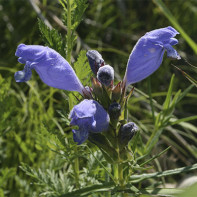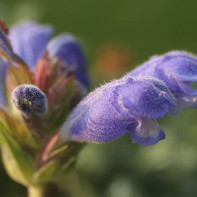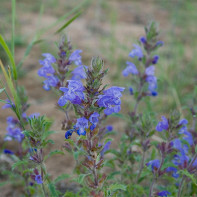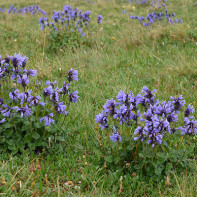Snakehead: medicinal properties and contraindications
Unpretentious herbaceous plant with textured flowers, resembling the head of a snake or dragon with an open mouth, can be found in many countries around the world. Snakehead is an excellent honeybee, valued by herbalists for its medicinal properties, by cosmetologists for its subtle fragrance, and by culinary experts for its spicy flavor.
- What it looks like and where it grows
- Types of
- Harvesting and storage
- Chemical Composition
- Therapeutic properties of serpentine head
- Snakehead in traditional medicine: recipes
- Infusion
- Decoction
- Healing tea
- Vitamin drink
- Tincture for hypertensive crises
- Compress
- Inhalation
- Bath
- Massage oil
- Headsnake herb application
- Cooking
- Cosmetology
- Contraindications for use
- Headsnake in its own bed
What it looks like and where it grows
The plant is not tall, barely reaching 60-70 cm. The stem is straight and dense, from the base to the top narrows. There are formed inflorescences of purple or blue hue. White flowers occasionally occur.
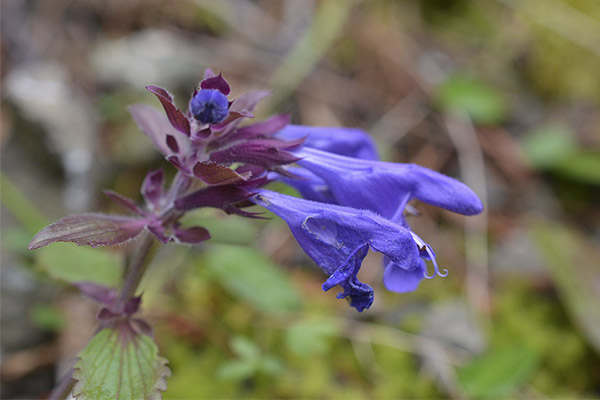
The name is compound, derived from the merger of the two Latin words "dragon" and "head." But it has many more folk nicknames. They reflect the properties or appearance. So in different regions and countries there are names:
- honeydew;
- Turkish mint;
- blueberry;
- marshmallow;
- dragon-headed mint.
We are talking about the same plant. Another thing is that there are several varieties, slightly different in appearance. Some of them are purposefully bred as medicinal or garden-decorative. Despite the differences in the appearance of the leaves and the size of the plant itself, the flowers are very similar in shape and resemble the head of a hissing snake or dragon. The ripening seed-nut also looks like a mythical beast, as it has an elongated shape and two light spots resembling eyes.
Species
All varieties belong to the Juniper family, unpretentious to growing conditions. There are slightly more than 40 species. All flowering time falls in the interval from the first days of July to the end of August, in September already forming seeds.
Interesting: The plant blooms in tiers, starting from the bottom and is capable of forming up to 500 flowers per season.
The most famous and popular are considered to be 6 species.
- Moldavian is very unpretentious. It well tolerates drought, overwatering and strong frosts. The most unpretentious species, found in many countries, prefers to settle on the banks of reservoirs. It differs from other species by its prolonged flowering period. The first buds appear in mid-July and continue to please with flowers almost until frosts.
- The panicle is widespread in areas of Siberia, the Volga region, the Black Sea region and the Far East. The opened flowers are a delicate purple shade, when they bloom they turn blue. Lives 1-2 years depending on location. In folk medicine, all parts of the plant are used, which has a strong sedative effect.
- Thyme-flowering is recognized by its early flowering. It opens the calyxes of inflorescences already in early spring, in mid-summer ripen three-sided dark seeds. On the stem there are clearly expressed tiers where the flowers are arranged in circles in the rosette of leaves. It is most commonly found in the Caucasus and Kazakhstan. Sometimes it can be found near dwellings and along roads, there it appears as an introduced, in the usual environment preferring damp hollows.
- Ruisha perennial, the tallest of all members of the family. Bright blue flowers of characteristic shape are visible from afar. Prefers rocky slopes, steppe expanses, foothills. Occurs in the Caucasus, Central Asia and the middle belt of Russia. It is often used as an ornamental plant because of its ability to attract bees and simultaneously repel pests with its spicy aroma.
- Alien in Russia is found only in Siberia. The main region of growth is China and Mongolia. Characterized by a powerful, well-developed root. The height of the plant varies depending on living conditions. Grows readily on stony soil. In folk medicine shows ambivalence. Different concentration of the infusion depresses or excites the nervous system, so the herbal infusion is used strictly according to the instructions.
- Large-flowered or Altai is characterized by beautiful bright blue flowers. A perennial, it prefers moist, loose soils rich in minerals. Refers to mellifera, has a strong lemon odor.
Snakehead habitat is very wide - from Central Asia and China to the Siberian expanses. Despite differences in appearance and life span, all varieties have medicinal properties, scare away strong odor of garden and garden pests. In folk recipes, the entire above-ground part of the plant is used.
Snakehead has been adapted to cultural cultivation. Varieties have been bred for this purpose:
- Albion;
- Egoist;
- Gorynych;
- Aroma 1 and 2;
- Gorgon.
They are larger than wild plants and have a more pronounced scent of flowers and leaves.
Gathering and storage
The most valuable raw material is obtained when collected at the beginning of flowering. For this purpose, choose a dry sunny day, cut off the top part of the plant about 1\3 or a little more together with the leaves and flowers. Sometimes for complex mixtures they take raw material without a stem, picking it by hand. Each species has a slightly different time of formation of buds, you should focus on the beginning of July. Only the thyme-flowered one has flowering in the spring, which is necessarily taken into account when collecting.
Dry the blanks in a shady, well-ventilated place, without access to sunlight. To completely dry 2-3 days in good weather. The plant is full of fatty acids and essential oils, valuable in cosmetology, so the industrial harvesting is processed raw mass. This should be done as soon as possible after harvesting so that the light fractions do not volatilize.
Chemical composition
It may vary slightly in detail, depending on the species and the place of growth. The common elements of all varieties are:
- tannins;
- coumarin;
- flavonoids;
- essential oils;
- fructose;
- glucose;
- glutamic and asparagine amino acids;
- magnesium;
- iron;
- zinc;
- potassium;
- alkaloids;
- oleic, linolenic, palmitic acids.
It is worth considering: useful substances are located in the plant unevenly, for example, the main mass of trace elements is concentrated in the root system, and essential oils - in the leaves and flowers.
Medicinal properties of snakehead
Much depends on the species of the plant, each of them has its own characteristics used in the treatment of diseases.
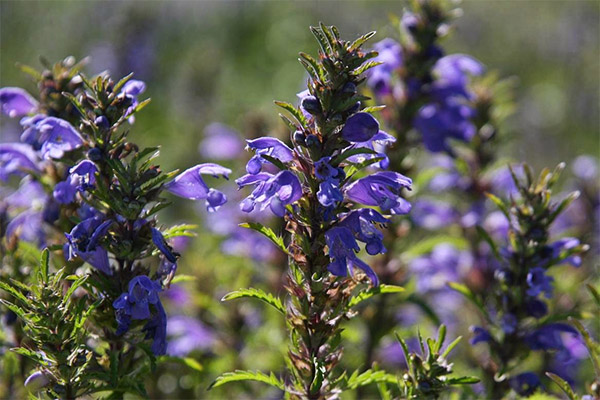
Most often the Moldavian species is harvested. It has the widest action, is valued for its mild effect on most systems of the body, is included in sedative, anticonvulsant, analgesic, anti-inflammatory gatherings. The plant has a strong antibacterial, astringent and wound-healing action. It is used in the treatment of nasopharynx and throat, heart disease, high blood pressure spikes, depression, loss of strength. Tinctures and decoctions based on snakehead are effective for anemia, stomach ailments, appetite disorders.
Alien honeydew is planted to attract bees, used as a styptic and anti-tumor agent. From it are prepared decoctions to alleviate the symptoms of gastritis, stabilize blood pressure, normalize the emotional background. In the form of lotions it is used to treat inflammation, acts as an antibacterial agent. It is highly valued in cosmetology for its abundance of essential oils and ability to relieve skin irritations.
Draconifer ryusha is grown as an ornamental plant. It is also cultivated on an industrial scale, using the oil obtained from the seeds in the paint industry. Potions consisting of leaves, flowers, and the upper part of the plant are used to relieve headaches, strengthen potency, and stabilize the gastrointestinal tract. Decoction is effective during epidemics of influenza and respiratory diseases as a general tonic and immunity booster. Compresses with tincture relieve painful sensations in arthritis and rheumatism.
Thyme species has antispasmodic and wound healing effects, useful for vascular spasms and intestinal colic. Decoction quickly stops diarrhea, in passing having an antibacterial effect. Compresses relieve itching in scabies, stop its spread to other parts of the body.
Ponytail uterus has a mild sedative effect. It is also used in the treatment of pulmonary tuberculosis, female illnesses. Collections on its basis relieve headaches, relieve migraine attacks, increase the body's resistance during mass respiratory diseases. Baths with decoction are recommended for rheumatic pains. Infusion is used to gargle with gingivitis, stomatitis. It is taken orally according to the scheme in nephritis and gastroenteritis.
Large-flowered Turkish mint is effective for neuralgia, toothache, muscle and vascular spasms. Can be used as a mild laxative. The essential oil of the plant can quickly suppress the development of pathogenic fungi and have a preventive effect during epidemics of influenza and SARS. The peculiarity is that pathogenic flora is not able to develop resistance to snakehead. Valued as a spicy seasoning in canning and confectionery production.
Important: The Altai species is considered one of the best honeybees, the honey turns out almost transparent, very fragrant, with a lemony smell. It retains the medicinal properties inherent in the plant.
Herbalists recommend collecting and harvesting each species separately, as they have different effects on the body and are effective for different diseases. The exception is the general strengthening sets.
Snakehead Moldavian in folk medicine: recipes
The plant is used in the preparation of decoctions, tinctures, for baths, compresses and lotions.
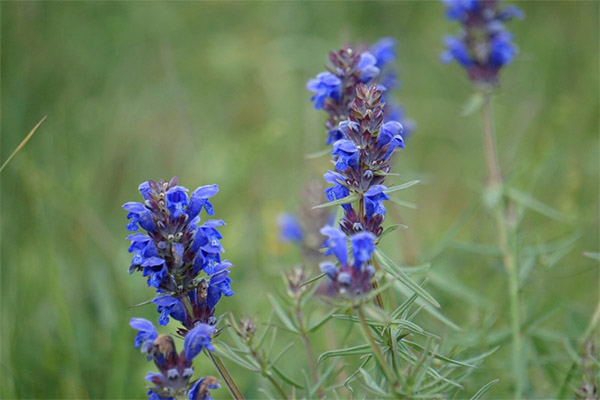
Infusion
It is prepared on an alcohol base. You can replace it with vodka or moonshine double purification. Proportions: 1 tbsp dry raw materials in 200 ml of liquid. Insist 3-5 days in a dark place. Take 1 tsp. spoonful with water. Used for general weakness and diseases of the gastrointestinal tract.
Water infusion is effective in inflammation of the mouth, as lotions for wounds, bruises and skin inflammation. 1 tbsp infused a glass of boiling water, infused for 15 minutes, take a half glass three times a day in diseases of the stomach, kidneys, genitourinary system. Good results infusion gives with migraines, colds, neuralgia.
Decoction .
Effective in diseases of the kidneys. It is prepared at the rate of 2 tablespoons of leaves and flowers for 400 ml of water. It is stewed in a water bath for 20 minutes, cooled and filtered.
Important: Infusions and decoctions should not be stored longer than 24 hours. Then they lose their healing properties.
Healing tea
It warms, soothes, relieves chronic fatigue and the effects of stress. It is consumed in a hot form. A mixture of equal parts of grass Snakehead, oregano and mint, a total of 3 tablespoons, pour boiling water and insist 10 minutes. Drink in any quantity instead of the usual daily beverages. Tea boosts the immune system, it is recommended during menopause to relieve emotional outbursts.
Vitamin drink
For 1 liter of boiling water take 2-3 spoons of honey, 150 ml of cranberry juice, 1 tbsp. honey of any kind. The herb is pre-infused in boiling water for 2-5 minutes, then strain. In the infusion add the remaining ingredients. It is best to prepare such a drink in portions, as it is drunk in a warm form. Once cooled, it loses most of its flavor and useful properties.
Tincture for hypertensive crises.
The remedy helps to stabilize blood pressure and prevent its rapid rise against stress or as a reaction to a change in the weather. To prepare it, take 0.5 cup of crushed root for 5 cups of vodka or diluted alcohol. Duration of preparation of the tincture - 15 days. Insist and store it in a dark cool place. Take a course of 30 days, 35-40 drops at night, drinking only water. Mixed with milk, tea or compote undesirable. In undiluted form tincture rubbed on painful joints.
Compress .
From the steamed herb form a thin lozenge and apply to bruises. Cover the top of the compress with a cotton cloth, but do not insulate.
Inhalation
The antispasmodic and anti-inflammatory action of the plant perfectly pacifies the cough, liquefies sputum, relieves vasospasm, eases breathing for most of the night. In a small enamel pan or ladle put 2-3 tablespoons of dried herbs, pour boiling water over 2-3 cm. Inhalation is carried out for 5-7 minutes until the infusion cools. To increase the effect, you need to cover your head with a towel, creating a tent over the pot.
Bath .
The procedure is useful for cystitis, diseases of the female genital sphere. Carried out in a sitting position. You will need a bucket of boiling water and 200 g of dried leaves along with the flowers. The herb is placed in boiling water and left until it reaches a comfortable temperature of 30-40 degrees. Then the mixture is poured into a basin. The session lasts no more than 10 minutes.
Massage oil
It is easy to prepare at home. The basis is any vegetable oil. Most often used is cold-pressed olive oil. Portion of fresh herbs poured oil and put in a dark cool place for 3 days. For better dissolution of useful substances shake the container every day. Then the raw material is squeezed, the same oil is poured over the fresh part of the dried leaves. The procedure is repeated three times. After 9 days the resulting oil can be used for massage.
The use of grass snakehead
The plant is considered quite common. You do not have to hunt for it in damp hollows, picking precious stems by the piece. It grows in whole clearings and in most cases is simply mowed. That much raw material is enough for any purpose - medicinal, culinary, cosmetic. The bright lemon aroma and spicy taste allows the molasses to be used as a stand-alone spice or used in aromatic gatherings together with pepper, cardamom, bay leaf and currant leaf.
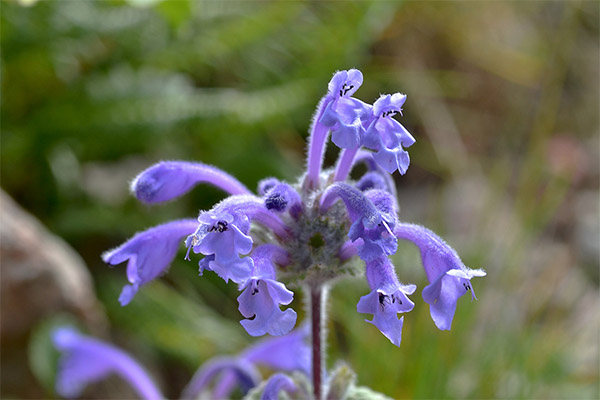
Culinary
Snakehead is not called Turkish molasses for nothing. It has a subtle but persistent lemon flavor. And the Altai variety has it mixed with honey tones. Leaves are dried when spread out and stored for a year, adding to tea, morsels, fruit and berry compote. In fresh form they are used in canning cucumbers, tomatoes, watermelons, giving them a spicy flavor. In some sausages, too, a little honey is added, and this is already a recognized recipe.
The plant is added to mousses, jellies, fish broths, meat dishes, kvass. It is part of herbal mixes for making vermouths, herbal balsams and tinctures.
It is worth remembering: when boiling, the aroma and flavor almost disappear, so the seasoning is put in a ready, but still hot dish.
Snakehead combines well with such herbs and spices as:
- fennel;
- anise;
- tarragon;
- mint;
- cloves;
- badian;
- cinnamon;
- lovage.
Aromatic lemon salt is prepared with the addition of Turkish melissa, which also includes pepper and lemon zest. Mixed with thyme and marjoram, it is a great addition to minced or foil-baked fish.
Cosmetology
The essential oils of the plant are very persistent and have a rich trail, so they are used to produce expensive perfumes and perfume water, soaps, massage oils. Decoctions and infusions can be made on their own and used to rinse hair, washing and prevention of skin inflammations. Their regular use improves complexion, improves skin elasticity, relieves irritation. Rinsing strengthens the hair on the entire length, prevents hair loss, eliminates the ends of the ends.
Contraindications for use
They almost do not exist, except for individual intolerance. With caution, you should use the plant in food during pregnancy and breastfeeding. It is not recommended to use it during the exacerbation of diseases of the digestive system.
Snakehead in your own bed
In order not to jump over bumps every year in search of the right plant, it can be simply planted on a dacha or homestead plot. It is unpretentious, quickly adapts to any climatic conditions, is not afraid of frost. Trouble with sprouts also do not have to. Snakehead of any kind is sown immediately to a permanent place in early spring after the end of frosts. Altai has long been considered a decorative species and is used to create green borders, in the design of alpine mountains, in mixed flower gardens as a border element. At the same time you will get a triple benefit:
- Always at hand a fragrant spice and a medicinal remedy.
- The scent of the plant will attract bees, so you can plant pollinating varieties of plants.
- Pests, including aphids, slugs and garden ants, strongly dislike the phytoncides emitted by the snakehead and leave the area where it grows.
Snakehead is a valuable medicinal plant and an aromatic spice. It will be a great addition to the home medicine cabinet, add variety to desserts, drinks and second courses, repel pests and decorate the garden.
«Important: All information on this site is provided for informational purposes only. for information purposes only. Ask your gardening professional for advice before using any of the advice. health care professional before using any of the recommendations. Neither the editors nor the authors shall be liable for any possible harm caused by materials."

